Invelox CFD: A Fluent Simulation of Wind Power Enhancement
Invelox CFD: A Fluent Simulation of Wind Power Enhancement
- Upon ordering this product, you will be provided with a geometry file, a mesh file, and an in-depth Training Video that offers a step-by-step training on the simulation process.
- For any more inquiries regarding the product, please do not hesitate to reach out to us at info@CFDLAND.com or through our online support assistant.
€240 Original price was: €240.€125Current price is: €125.
Traditional wind turbines have known challenges. They need large, expensive blades and require strong, steady winds to work well. This limits where they can be built. The Invelox system is a clever and innovative solution to these problems. Instead of using massive open blades to catch the wind, it uses a large funnel-like structure on the ground to capture and concentrate the airflow. This concept allows for the use of smaller, more efficient turbines inside the device. An Invelox CFD simulation is the best engineering tool to study and prove how well this new design works. Using ANSYS Fluent, this report provides a detailed analysis of the system’s performance, showing how it can make Wind Power CFD more effective, especially in areas with lower wind speeds. The simulation is guided by the foundational research paper on this technology [1].
- Reference [1]: Allaei, Daryoush, and Yiannis Andreopoulos. “INVELOX: Description of a new concept in wind power and its performance evaluation.” Energy69 (2014): 336-344.

Figure 1: The Invelox system, a new concept for capturing Wind Power Fluent is designed to analyze.### Modeling the Invelox CFD Simulation in Fluent
Simulation Process: Modeling the Invelox CFD Simulation in Fluent
To accurately simulate the Invelox Fluent system, we began with a detailed 3D model of its unique omnidirectional, double-nested cone geometry. This design is special because it can capture wind from any direction. The model was then imported into the ANSYS meshing tool, where a computational grid was generated, as shown in Figure 2. This high-quality mesh is essential for a reliable Wind Power CFD simulation.
Inside ANSYS Fluent, the simulation was set up using the robust pressure-based solver. The k-epsilon turbulence model was chosen because it is excellent for predicting this type of external aerodynamic flow. For the boundary conditions, a steady wind speed of 6.7 m/s (about 15 mph) was defined at the inlet of the large computational domain. This represents a typical, moderate wind condition. At the system’s exit, a pressure-outlet condition was applied to allow the air to flow out naturally. The simulation was run in a steady-state to see the final, stable performance of the Invelox system.
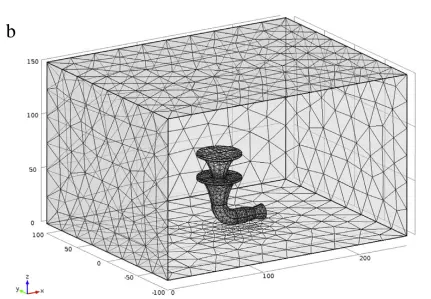
Figure 2: The computational domain and mesh used for the Invelox CFD simulation.
Post-processing: CFD Analysis of Velocity Amplification and Power Potential
The simulation results provide a clear and fully substantiated story of the Invelox system’s core function: wind amplification. The velocity contour in Figure 3 is the most direct proof of this. The incoming free-stream wind has a speed of 6.7 m/s (shown in green/yellow). As this air is captured by the large omnidirectional intake, the funnel-shaped geometry forces the air into a progressively smaller channel. This constriction leads to a dramatic acceleration, which is a classic demonstration of the Venturi effect. The simulation shows that by the time the air reaches the narrowest throat section—where the turbine would be placed—the velocity has skyrocketed to over 18.5 m/s (shown in bright red). This represents a velocity increase of nearly three times, a massive gain achieved purely through the system’s clever aerodynamic design.
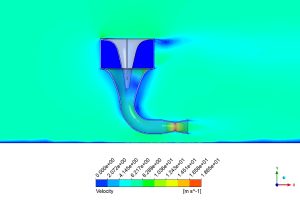
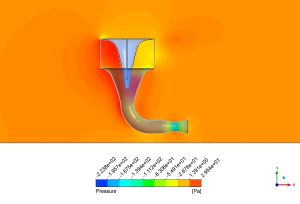
Figure 3: Velocity and pressure distributions from the Invelox Fluent simulation, showing the dramatic increase in speed and corresponding drop in pressure in the throat section.
This huge increase in speed has a direct and powerful consequence for energy generation, which is explained by the pressure contour. According to Bernoulli’s principle, where fluid speed is high, pressure is low. The simulation confirms this perfectly, showing a region of high pressure (around 0.29 Pa) at the wide intake and a zone of significant low pressure (around -2.38 Pa) in the high-velocity throat section. The key principle of Wind Power Fluent analysis is that the available power in the wind is proportional to the cube of its velocity (P ∝ v³). Therefore, tripling the wind speed does not triple the power; it increases the available power by a factor of approximately 3³, or 27 times. The most significant achievement of this Invelox CFD simulation is that it quantitatively proves the system’s primary claim: it can take a low-to-moderate wind that might be useless for a traditional turbine and concentrate it into a powerful, high-speed jet of air. This allows a smaller, cheaper, and safer ground-based turbine to generate a significant amount of electricity, potentially revolutionizing wind energy capture.
We pride ourselves on presenting unique products at CFDLAND. We stand out for our scientific rigor and validity. Our products are not based on guesswork or theoretical assumptions like many others. Instead, most of our products are validated using experimental or numerical data from valued scientific journals. Even if direct validation isn’t possible, we build our models and assumptions on the latest research, typically using reference articles to approximate reality.
Yes, we’ll be here . If you have trouble loading files, having technical problems, or have any questions about how to use our products, our technical support team is here to help.
You can load geometry and mesh files, as well as case and data files, using any version of ANSYS Fluent.
€210 Original price was: €210.€185Current price is: €185.

€205 Original price was: €205.€185Current price is: €185.

€165 Original price was: €165.€105Current price is: €105.

€185 Original price was: €185.€135Current price is: €135.

€245 Original price was: €245.€185Current price is: €185.

€245 Original price was: €245.€185Current price is: €185.












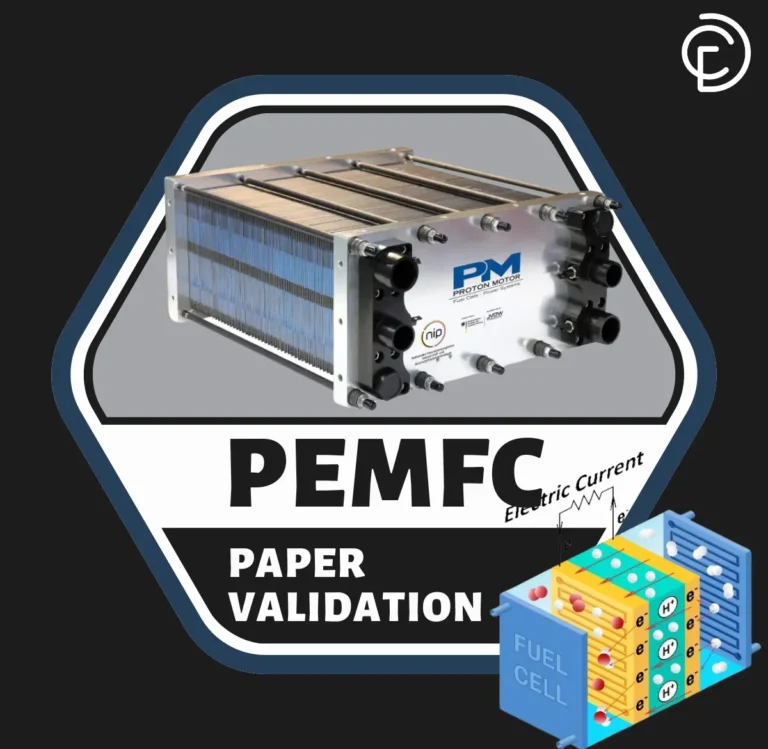

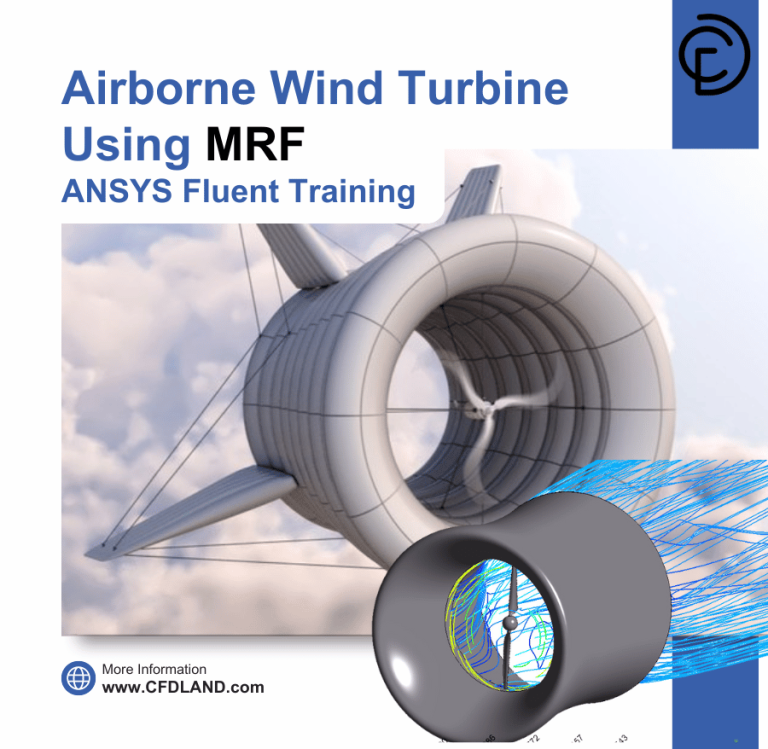
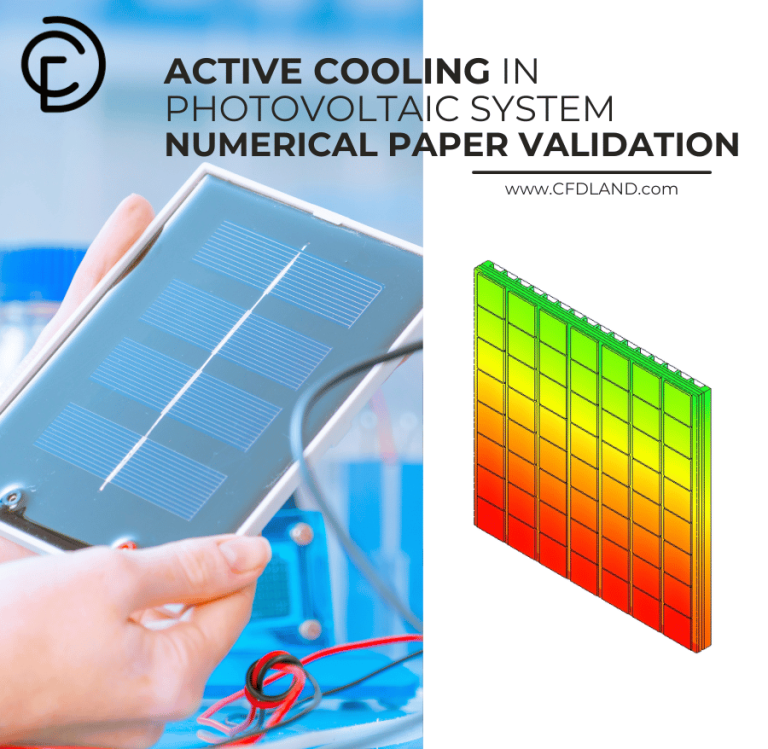

Reviews
There are no reviews yet.